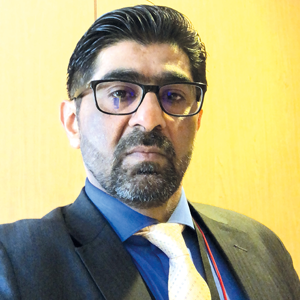THANK YOU FOR SUBSCRIBING

Strategies for Retaining Employees in the Wake of Layoffs and Resignations
Scott Lee, Associate Vice President, Head Of It Infrastructure & Operations, Arch Mi


Scott Lee, Associate Vice President, Head Of It Infrastructure & Operations, Arch Mi
The IT industry has always been a highly competitive and dynamic field, with companies constantly vying for the top talent in the industry. However, the past year has been particularly challenging for both employers and employees. The 2022 great resignation saw a record number of workers leave their jobs, while the 2023 layoffs have left many IT professionals feeling uncertain about their future. In this article, we’ll explore five strategies for retaining your IT talent during these challenging times.
Prioritize Employee Well- Being
In a post-COVID world, employees are placing a greater emphasis on work-life balance and mental health. Companies that prioritize employee well-being and create a positive work environment are more likely to retain their top talent. Creating a supportive workplace culture, including mental health resources, flexible work arrangements, and team-building activities, is no longer an added benefit but rather an expected one. In a recent Gallup study, 2022 saw as many as 39 percent of employees work fully remotely. Compare that to only 8 percent pre-pandemic in 2019. Going forward, approximately 53 percent of people who can work remotely expect a hybrid arrangement, working at least 2 to 3 days at home. Hybrid policies are conduits to a better work-life balance, providing a nice blend of in-office collaboration and work schedule flexibility. Promoting such policies as part of the job description will attract new talent to your openings. Retrofitting the expectations of your current team members to include hybrid policies will enable you to better retain your talent.
Offer Professional Development Opportunities
IT professionals are constantly looking for ways to grow their skills and advance their careers. Companies that invest in professional development opportunities, such as training programs and mentorship initiatives, are more likely to retain their top talent. Managers that focus on developing their team members will see better retention and higher-performing teams. A 2022 Gallup study finds that “opportunities to learn and grow” are the top reason younger generations are attracted to an organization, while “lack of development and advancement opportunities” is the top reason that employees of all ages quit. But what does development look like? Signing up employees for classes and conferences is a good start but may not yield the intended results. As much as 70 percent of the development in any area should come from key experiences and applied learning, whereas only 10 percent should come from training. The remaining 20 percent should revolve around feedback from managers and peers. Creating a proper development plan using the 70/20/10 model involves identifying 2 to 3 areas for development and planning how to learn the skills, practice the skills, obtain feedback on how the skills were applied, then adjust further development. Managers focusing on this area will not only see better retention but also higher-performing teams.
Conduct Stay Interviews
Many companies have exit interviews once an employee decides to leave. But what if you could prevent the employee from leaving, or at least get a sense that it may be coming? Gartner research states that globally 36.4 percent of IT employees are currently looking for a new role.
That includes 26.2 percent of U.S.-based IT employees and more than 50 percent of employees in Asia. Many managers have frequent one-on-ones with their direct reports on a regular basis.Using some of that one-on-one time to conduct “stay interviews” may help uncover specific actions leadership can take to provide a more positive employee experience. The manager can ask questions inquiring about what keeps employees coming to work, what can make their experience better, and what their future aspirations are. Having these conversations before the employee leaves may allow leaders to implement policies and practices that keep the employees engaged and satisfied, which in turn generates higher-performing teams.
Foster a Sense of Purpose and Belonging, Not Just for the Employees
Employees want to feel that their work is making a difference and that they are part of something bigger than themselves. Companies that foster a sense of purpose and belonging are more likely to retain their top talent. Creating a sense of purpose and belonging within the workplace, such as by aligning company values with employee values, promoting diversity of thought and inclusion, and giving back to the community, will foster higher levels of engagement in both managers and employees. But the managers themselves need to be engaged. Gallup estimates that a whopping 65 percent of managers are not engaged or are actively disengaged. When an employee is managed by an engaged manager, they themselves are 59 percent more likely to be engaged, according to Gallup. The key takeaway here is that the organization should do all the things in this article not only for employees but for the managers within the group as well. Providing leadership development training and career advancement opportunities will help keep aspiring leaders from looking elsewhere to satisfy their thirst for growth. The Gallup study shows that, behind pay and benefits, advancement and development opportunities, and direct managers and senior leaders are the two and three (respectively) main reasons top employees leave a company. Getting your managers upskilled and actively engaged will have positive effects throughout the organization.
Creating A Sense Of Purpose And Belonging Within The Workplace, Such As By Aligning Company Values With Employee Values, Promoting Diversity Of Thought And Inclusion, And Giving Back To The Community, Will Foster Higher Levels Of Engagement In Both Managers And Employees
Develop an IT EVP
The employee value proposition is a great way to describe to both current and potential future employees why working in your organization will help them. Gartner found that 28 percent of companies have an EVP for the entire enterprise, but the needs of IT team members require a little extra sauce. Only 9 percent of IT organizations in the US have an EVP tailored for IT talent specifically, according to Garner. Elements of a successful EVP will describe the following:
• How the company and group look after the employee’s well-being. Flexible work schedules, outstanding benefits, and organizational stability are a few areas to touch on.
• How the activities of the group benefit the organization at large. Getting employees to become fully engaged requires that they understand how their efforts are contributing to the success of the company.
• How the group encourages and values the contributions of employees and fosters innovation and professional development.
• How the organization promotes community support and environmental and social responsibility. Describing how the employees volunteer to make their communities better places can be a challenge with a workforce that may not all be together, but finding ways to allow employees to engage in their communities will attract young talent to the team.
Designing an EVP specifically for IT is a good way to improve the engagement of current employees and show potential employees what’s possible. According to Gartner, 64 percent of employees value more opportunities to learn and a better work-life balance over salary when changing jobs, and an EVP is a great way to explain how that will happen in your organization.
Retaining IT talent in the wake of great resignations and layoffs can be challenging, but it’s not impossible. By prioritizing employee well-being, offering professional development opportunities, conducting stay interviews, fostering a sense of purpose and belonging for employees and managers, and developing an EVP, companies can retain their top talent and thrive in the ever-evolving IT industry.











